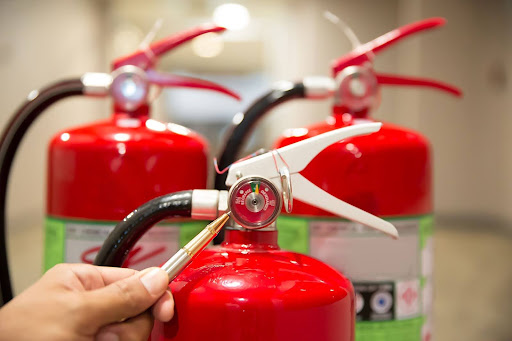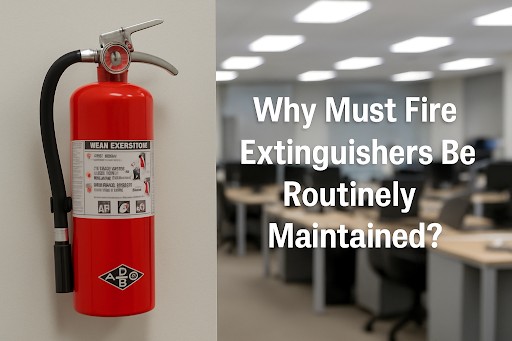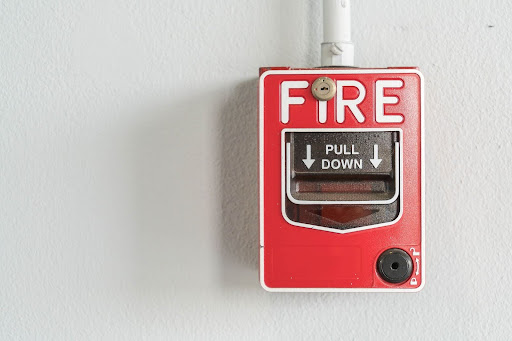Fire extinguishers are your first line of defense during an emergency—if they work. That’s a big “if” when they’re not routinely checked. A neglected extinguisher is a silent hazard, sitting useless until the moment you need it most. So, why must fire extinguishers be routinely maintained? The short answer: to ensure reliability, prevent failure, stay compliant, and protect lives and property. The longer answer? Let’s walk through it.
Why Is Routine Maintenance So Crucial?
Routine fire extinguisher maintenance isn’t just a checklist—it’s a lifesaving responsibility. It’s about being proactive instead of reactive. Fires move fast, and if your equipment fails, there’s no second chance.
Here’s a deeper look at why routine fire extinguisher upkeep matters.
Effectiveness in Emergencies
When a fire breaks out, timing is everything. A few seconds can mean the difference between a contained flame and a disaster.
Routine maintenance ensures:
- The extinguisher is fully pressurized
- There are no blockages in the nozzle or hose
- The safety pin, handle, and seal are intact
- The extinguishing agent is in usable condition
A maintained extinguisher will perform exactly as intended, helping you stop a fire before it spreads.

Preventing Malfunctions Before They Cost You
Even if a fire extinguisher looks fine on the outside, time takes a toll on its inner components.
Common issues that arise over time include:
- Loss of pressure due to slow leaks
- Dry chemical clumping or moisture contamination
- Broken or corroded parts, like seals and nozzles
Routine servicing catches these problems early. You don’t want to discover a malfunction in the middle of an actual fire.
Compliance With Safety Regulations
NFPA 10 and OSHA regulations in the U.S. require routine inspection and servicing of fire extinguishers.
Here’s what the rules typically mandate:
| Maintenance Task | Frequency |
| Visual inspection | Monthly |
| Professional servicing | Annually |
| Internal examination | Every 6 years (certain types) |
| Hydrostatic testing | Every 5–12 years (varies by type) |
Neglecting these timelines can result in:
- Fines from fire inspectors
- Failed safety audits
- Insurance claim denial in the event of fire
For businesses, routine maintenance is a legal necessity, not just a best practice.
Extending the Lifespan of Equipment
Just like any piece of safety gear, fire extinguishers degrade with age. But routine care helps extend their usability.
When properly maintained:
- Dry chemical extinguishers can last 10–12 years
- CO₂ and water-based extinguishers can last up to 15 years
Avoiding early replacement saves money and hassle, especially for facilities that use multiple units.

Minimizing the Risk of Escalating Fires
A fire extinguisher that fails at the moment you need it most allows a small, manageable fire to turn into a full-blown crisis.
Maintenance helps ensure:
- Fires are extinguished quickly
- Emergency exits remain accessible
- Damage is contained and recoverable
This proactive care can mean the difference between a scorched countertop and an entire building loss.
Protecting People and Property
This is the heart of the issue. Fire extinguishers save lives.
If a fire breaks out in a crowded office, restaurant, or home:
- A working extinguisher protects occupants from injury or death
- It reduces smoke and toxic gas inhalation risks
- It limits damage to walls, furniture, and equipment
An untested extinguisher puts everyone at greater risk. Simply having one isn’t enough—it must be functional, too.
Also Read : All Fire Extinguishers Are Labeled With a Letter and a Number. What Does the Number Indicate?
Real-World Reminder: When Maintenance Saves the Day
In 2023, a small electrical fire broke out in the kitchen of a daycare center in Ohio. Staff members used a routinely serviced fire extinguisher to control the fire within seconds—well before fire services arrived. Not a single child was harmed. Had that extinguisher failed, the outcome could have been catastrophic.
FAQ: Fire Extinguisher Maintenance
1. How often should fire extinguishers be inspected?
Fire extinguishers should be visually inspected every month and professionally serviced once a year. Hydrostatic testing may be required every 5–12 years, depending on the type.
2. Do fire extinguishers expire?
Yes. Most fire extinguishers have a lifespan of 5 to 15 years. Even if unused, they need regular servicing to remain effective.
3. Who is responsible for maintenance?
In homes, the owner is responsible. In workplaces, employers or safety officers must ensure compliance. Only licensed professionals should perform annual servicing and testing.
What are signs a fire extinguisher needs service?
- Pressure gauge is outside the green zone
- Inspection tag is outdated
- Visible damage, corrosion, or leakage
- Blocked or cracked nozzle
Final Thoughts: Stay Ready, Stay Safe
So, why must fire extinguishers be routinely maintained? Because lives, businesses, and property depend on it. Routine maintenance ensures your extinguishers work when needed, meet regulations, last longer, and actually do their job when seconds matter.
Don’t wait for an emergency to find out your extinguisher doesn’t work.




